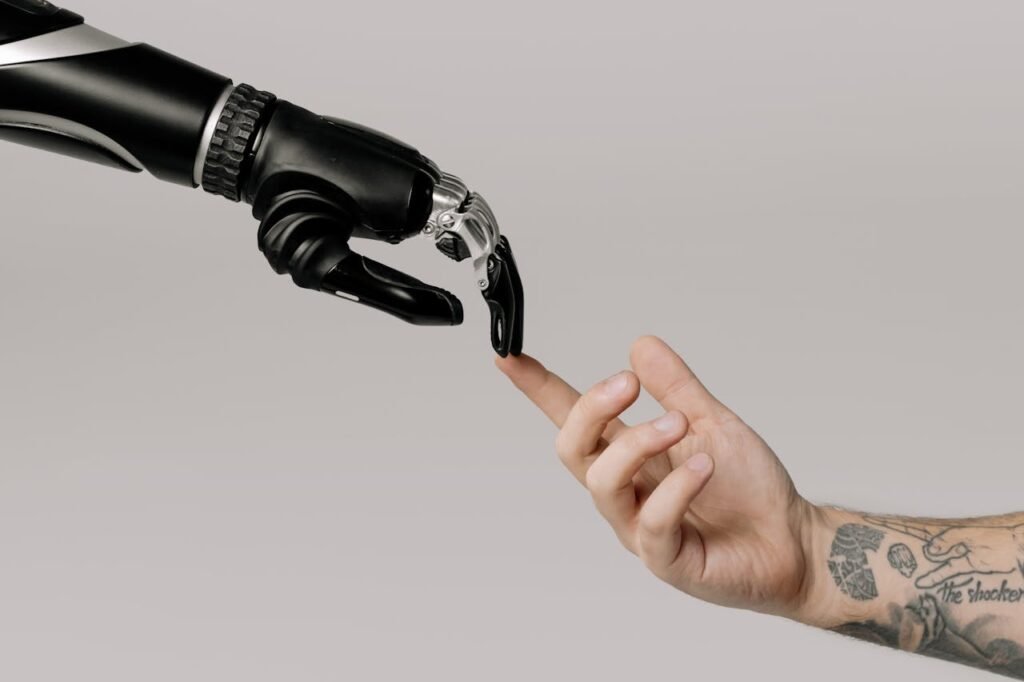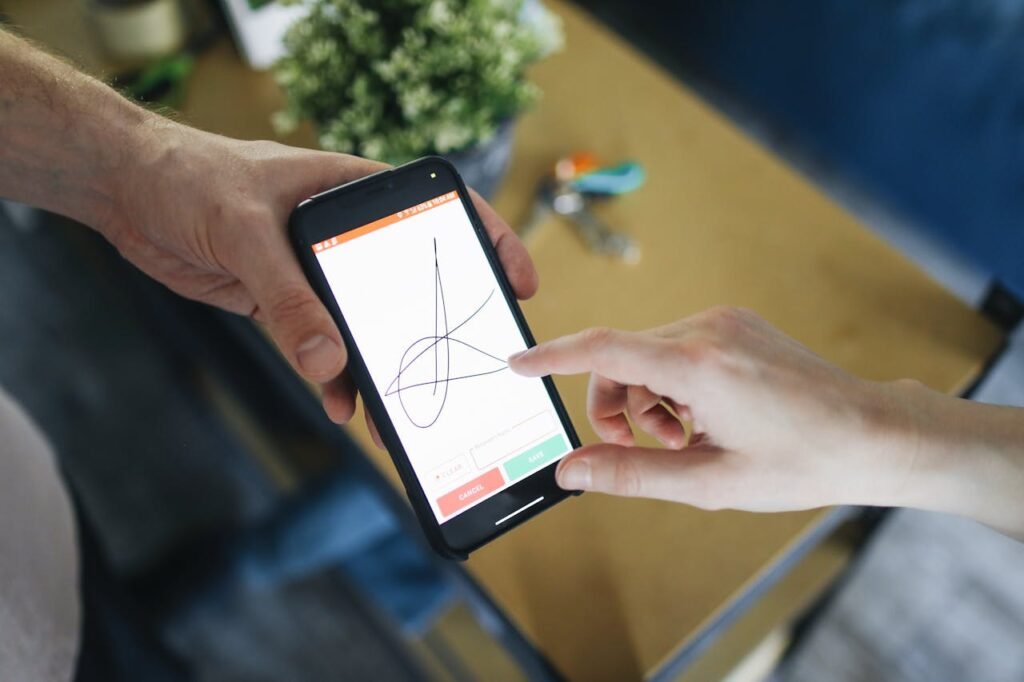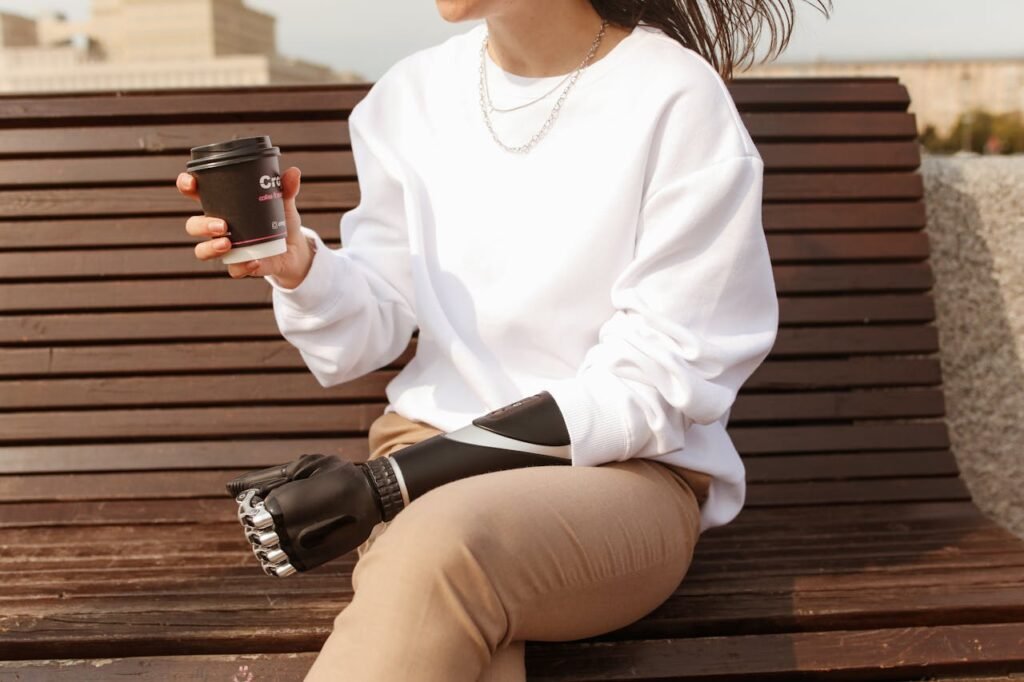Access to quality prosthetic care can change a person’s life. For women who have lost a limb, a well-designed prosthetic hand restores more than mobility—it restores independence, confidence, and a sense of normalcy.
However, one major challenge still stands in the way for many Indian women: affordability. The cost of prosthetic hands, especially advanced myoelectric or customized cosmetic ones, can feel overwhelming.
That’s where health insurance and government support programs like Ayushman Bharat come in. These schemes have opened doors to affordable, and sometimes even free, prosthetic rehabilitation. Yet, many women in India still don’t know that they qualify for coverage—or how to navigate the paperwork to actually access it.
This guide breaks down everything you need to know about prosthetic hand coverage under insurance and Ayushman Bharat. It’s written especially for women—because the path to recovery should never be slowed down by confusion or lack of clarity.
We’ll explore how insurance works, what Ayushman Bharat covers, how to apply step-by-step, and how to make sure you get the right prosthetic through the right channel.
Understanding the Cost of Prosthetic Hands in India
Why Prosthetic Hands Are an Investment

A prosthetic hand is not just a medical device—it’s a daily companion that helps you perform tasks, regain independence, and rebuild confidence. The materials, technology, and customization involved make it a specialized piece of engineering.
For women who juggle work, home, and caregiving, a prosthetic that fits well and functions smoothly can make a huge difference in comfort and routine. However, the precision that goes into each device is what makes it costly.
Price Range Based on Type and Technology
The price of a prosthetic hand in India depends heavily on the type and level of technology it uses. Basic body-powered models may start around ₹30,000 to ₹60,000. These are durable, functional, and suitable for everyday activities like cooking, cleaning, and light office work.
Myoelectric or bionic prosthetics, which operate using muscle signals, can cost anywhere from ₹2 lakhs to ₹10 lakhs or more. These offer more natural movement, improved grip control, and a realistic appearance.
In between these two extremes are hybrid models that combine mechanical simplicity with limited electronic features, often priced around ₹1 to ₹3 lakhs.
Customization and Fit Matter in Cost
No two users are alike, and neither are their prosthetics. Women, especially those with smaller frames or specific aesthetic preferences, often need customized sockets or silicone gloves matched to their skin tone.
This customization improves both comfort and appearance but can add to the cost. A hand tailored to your size, skin shade, and daily use pattern may cost slightly more—but it performs better and lasts longer.
Maintenance and Replacement Costs
The expense doesn’t end with the purchase. Like any piece of technology, prosthetics require maintenance. Components such as gloves, batteries, or control cables may need replacement every few years.
Annual servicing, cleaning, and occasional recalibration ensure your prosthetic continues functioning smoothly. These small costs can add up, which is why insurance or government assistance is so valuable—it can cover not only the initial fitting but also future upkeep.
Regional Differences in Pricing
Costs can vary depending on where you live in India. Urban centers like Delhi, Mumbai, or Bengaluru generally have more advanced prosthetic clinics, which may charge more due to higher-quality components and services.
In smaller towns or through government hospitals, basic prosthetics may be available at subsidized rates or even free under certain health programs.
Understanding where to seek help is key, as your region might already have tie-ups with approved prosthetic centers through schemes like Ayushman Bharat.
Why Financial Assistance Is Essential for Women
In many Indian families, women prioritize the needs of others before their own. This often delays prosthetic rehabilitation after limb loss. The cost factor only adds to hesitation.
Affordable access through insurance or national health schemes removes that financial burden. It empowers women to focus on recovery, skill-building, and returning to their everyday roles without worrying about how to fund their prosthetic.
A Step Toward Equal Access
When prosthetics become affordable, they become accessible. This shift promotes equality—allowing women from all income groups to regain independence after amputation.
It also increases participation in work, education, and social life, which benefits not just the individual but the community as a whole.
Health Insurance Coverage for Prosthetic Hands in India
Why Insurance Matters in Prosthetic Rehabilitation

Health insurance is often seen as something that protects us during surgeries or hospital stays. But for amputees, it can mean much more—it can determine how soon and how comfortably life returns to normal.
Prosthetic rehabilitation can be expensive, and many people are unaware that their insurance policy may already include partial or full coverage for prosthetic limbs. Understanding how this works helps ensure you don’t miss out on benefits you’re entitled to.
Inclusion of Prosthetics Under Medical Insurance
In the past, most health insurance policies in India didn’t cover prosthetic devices at all. They focused mainly on hospitalization, surgery, and medications. But that’s slowly changing.
Many insurers today recognize prosthetics as part of post-surgery rehabilitation, especially if the amputation was medically necessary. This means costs related to the fitting, purchase, and training for prosthetic use may now fall under coverage.
However, inclusion varies between insurers. Some policies cover only a part of the prosthetic’s cost, while others may require you to pay upfront and claim reimbursement later.
Coverage Limits and Conditions
Even when prosthetic coverage is included, there are limits. Some insurance plans cap reimbursement based on a certain percentage of the total policy amount. Others may have a separate sub-limit for assistive devices like artificial limbs.
For example, if your total insured amount is ₹5 lakhs, the prosthetic coverage might be limited to ₹50,000 or ₹1 lakh, depending on your policy terms.
Understanding these small details before filing a claim saves you time and prevents misunderstandings. Always read the fine print or speak directly to your insurance provider for clarity.
Employer and Corporate Health Plans
If you work in a corporate setting, your company’s group health plan may already include prosthetic coverage. These plans often have broader rehabilitation benefits, especially for employees recovering from accidents.
Women in formal employment can check with their HR departments to confirm whether prosthetic rehabilitation is part of the employee wellness package.
Some companies even collaborate with specialized prosthetic clinics to ensure faster and smoother access to devices. This not only reduces paperwork but also speeds up recovery and return to work.
Accident and Disability Insurance
Separate from health insurance, accident and disability insurance policies can also help cover prosthetic costs. These plans are designed to assist financially after accidents or injuries that result in partial or complete limb loss.
For example, a personal accident policy often includes a lump-sum payout upon permanent disability. You can use that money toward a high-quality prosthetic hand, fittings, and related therapies.
This kind of coverage gives flexibility—you choose where and how to get your prosthetic, rather than relying only on hospitals within a specific network.
The Role of Government-Backed Insurance Plans
In India, government-supported insurance schemes are playing an increasing role in prosthetic care. For families that cannot afford private insurance, schemes like Ayushman Bharat, PMJAY, and state health missions bridge the gap.
They often cover prosthetic fitting, follow-up therapy, and training at recognized rehabilitation centers. For women, these schemes are particularly beneficial, as they remove financial obstacles that often delay recovery.
Filing a Claim for Prosthetic Coverage
The process of claiming prosthetic benefits under insurance involves documentation, verification, and follow-up. It usually begins with the treating doctor’s recommendation for a prosthetic device.
Once you have a written prescription or medical report explaining the necessity of the prosthetic, you can submit it to your insurer along with cost estimates from an approved supplier.
Depending on your policy, reimbursement may occur after you’ve purchased the prosthetic, or the insurer may pay the provider directly through a cashless process.
Maintaining all receipts, medical notes, and photos of the device ensures a smoother claim process.
The Importance of Choosing an Empaneled Prosthetic Provider
Insurance companies typically prefer you to use empaneled providers—clinics or manufacturers they have agreements with. This ensures quality standards and prevents inflated pricing.
For users, this is actually helpful. Empaneled centers are usually experienced with insurance procedures, so they can assist in filling out forms, submitting invoices, and handling follow-ups.
Robobionics, for instance, often works with hospitals and insurers to simplify the process for users who are already under rehabilitation coverage.
Coverage for Replacement or Upgrades
Many users don’t realize that prosthetic hands have a limited lifespan. Depending on the model and level of use, they might need replacement every five to seven years.
Some insurance policies allow partial coverage for replacements, especially if wear and tear have been medically verified. Advanced policies may even consider upgrades—allowing you to shift from a basic model to a myoelectric one when medically justified.
This feature helps women continue using modern and comfortable prosthetics without bearing the full cost themselves.
Insurance for Children and Young Users
For younger amputees, especially girls, insurance plays a crucial role because prosthetics need replacement as the body grows.
Certain pediatric health plans and disability insurance schemes cover multiple prosthetic fittings across years. These plans ensure that the child’s device keeps up with their physical and social development without causing financial stress on the family.
Parents should ask their insurer specifically about “growth-based refitting” or “recurrent rehabilitation coverage” when choosing a policy.
Reviewing and Customizing Your Policy
If you already have health insurance, reviewing it yearly helps ensure your coverage evolves with your needs.
Some insurers allow you to add prosthetic coverage through an add-on or rider at a small extra cost. These riders can make a major difference if you ever require replacement, servicing, or an upgrade.
As prosthetic technology advances, it’s wise to stay proactive. Updating your policy ensures you’re covered for the latest devices rather than being limited to older, basic models.
The Growing Awareness of Prosthetic Inclusion
More insurance companies are beginning to recognize prosthetics as essential to complete rehabilitation rather than optional aids.
This shift has been driven by patient advocacy groups, manufacturers, and organizations promoting limb-loss awareness in India. For women, especially in rural areas, this change could be life-changing—making advanced prosthetics accessible through affordable health plans.
Ayushman Bharat and Government Support for Prosthetic Hands
Understanding Ayushman Bharat

Ayushman Bharat, also known as the Pradhan Mantri Jan Arogya Yojana (PMJAY), is one of India’s largest health protection schemes. It was launched to make quality healthcare accessible to low-income families and individuals who otherwise could not afford major medical expenses.
Under this scheme, eligible families can receive up to ₹5 lakhs per year for hospitalization and medical treatment at empaneled public and private hospitals. But beyond surgeries and hospital stays, Ayushman Bharat also covers essential rehabilitation procedures—and that includes prosthetic fittings.
For women who have undergone amputation due to accidents, diabetes, cancer, or infections, this program can make the difference between waiting years for a prosthetic and getting one immediately after recovery.
Prosthetic Coverage Under Ayushman Bharat
Prosthetic care falls under the category of “rehabilitation and physical aid services.” While not every prosthetic device is listed by name, many approved packages include limb fitting and assistive device support.
In many states, specialized rehabilitation centers and government hospitals under Ayushman Bharat provide basic to mid-level prosthetic hands free of cost or at highly subsidized rates.
This means that women who qualify under the scheme can access prosthetic care without paying from their own pocket, as long as the procedure and provider are approved under PMJAY.
Who Qualifies for the Scheme
Ayushman Bharat is targeted toward economically weaker sections of society, especially families without a steady source of income or formal employment. Eligibility is determined based on the Socio-Economic Caste Census (SECC) database.
If your family’s name appears on the PMJAY list, you automatically qualify. Women from households marked under deprivation criteria—such as no adult male earning member, widowed women, or those living in rural areas—are often prioritized.
Checking eligibility is easy. You can visit the official PMJAY website or use the Ayushman Bharat app and enter your ration card, Aadhaar number, or mobile number to verify your name.
Step-by-Step Process for Getting a Prosthetic Under Ayushman Bharat
Getting a prosthetic hand through Ayushman Bharat involves a few steps, but once you understand the process, it becomes quite straightforward.
First, you need to visit an empaneled hospital or government rehabilitation center under the scheme. The attending doctor or specialist will assess your condition and determine if a prosthetic fitting is medically required.
Next, the hospital will raise a request through the PMJAY portal for approval. Once the claim is verified and sanctioned, the fitting can be done by an authorized prosthetic provider.
The best part is that all payments are handled directly between the government and the hospital—patients do not have to pay upfront or deal with reimbursement delays.
Where to Get Ayushman Bharat Prosthetic Services
Across India, several hospitals and rehabilitation centers are now empaneled to offer prosthetic services under Ayushman Bharat.
These include leading institutions like All India Institute of Physical Medicine and Rehabilitation (AIIPMR) in Mumbai, National Institute for Locomotor Disabilities (NILD) in Kolkata, and many district hospitals that have partnered with certified prosthetic manufacturers.
In some cases, private prosthetic centers such as Robobionics also collaborate with these hospitals to ensure that patients receive high-quality, durable, and well-fitted devices under government programs.
Support for Rural and Tier-II Cities
One of the biggest achievements of Ayushman Bharat has been extending healthcare access beyond metro cities. Many women in rural and semi-urban areas previously had to travel hundreds of kilometers for prosthetic fitting.
Now, with district-level centers included under PMJAY, care is more accessible than ever. Women from smaller towns can get evaluated, fitted, and trained in using their prosthetic hands—all within their local area.
This change not only saves money but also removes the logistical and emotional barriers that often keep rural women from seeking rehabilitation.
Awareness Challenges Among Women
Despite all these benefits, many women are unaware that prosthetic care is available through Ayushman Bharat. The lack of clear communication, especially in rural India, means that eligible beneficiaries often miss out on life-changing support.
Social stigma also plays a role. Some women hesitate to come forward for prosthetic fitting due to misconceptions about cost, appearance, or acceptance.
Community-level awareness campaigns led by local health workers, NGOs, and prosthetic providers are gradually changing this. They help women understand that Ayushman Bharat coverage is their right—not charity—and that it empowers them to live independently again.
Linking Disability Certification with Ayushman Bharat
In many cases, to qualify for prosthetic benefits, women must also have a valid disability certificate. This document verifies limb loss and ensures eligibility for multiple benefits beyond Ayushman Bharat, such as travel concessions and skill development grants.
The certification process usually happens at a government hospital, where a medical board evaluates your condition and issues an official certificate under the Rights of Persons with Disabilities Act.
Once this certificate is linked to your Ayushman Bharat ID, you gain smoother access to prosthetic coverage and related financial support.
Other Government Schemes That Support Prosthetic Care
Apart from Ayushman Bharat, several other programs help women access prosthetic limbs at minimal cost. The Assistance to Disabled Persons (ADIP) scheme by the Ministry of Social Justice and Empowerment is one such initiative.
Under ADIP, women with certified disabilities can receive free prosthetics and mobility aids from government-approved centers. These devices are fully funded by the government and distributed during camps or through regional centers.
The Artificial Limbs Manufacturing Corporation of India (ALIMCO), a government enterprise, also plays a major role in this effort. They provide high-quality prosthetic components across the country and collaborate with state health missions to ensure reach.
Combining Ayushman Bharat with Other Support Systems
The best part about India’s health ecosystem today is that you can combine different schemes for maximum benefit. For example, Ayushman Bharat may cover hospitalization and fitting costs, while ADIP provides the prosthetic device itself.
If you have private insurance, you can still use it to cover accessories, cosmetic gloves, or future upgrades.
This flexibility ensures that cost never becomes a permanent barrier. By understanding how these systems work together, women can plan their rehabilitation journey smartly and sustainably.
Success Stories from Across India
Thousands of women have already benefited from Ayushman Bharat prosthetic coverage. From homemakers regaining independence in rural Bihar to professionals returning to work in Bengaluru, these stories show how effective government support can be when accessed properly.
Many of these women had never imagined that such advanced prosthetics could be available without heavy expenses. Once fitted, they not only resumed daily activities but also became local ambassadors—encouraging others to apply for the same support.
These real examples remind us that rehabilitation is not just physical—it’s emotional and social too.
The Need for Continued Awareness and Policy Improvement
While Ayushman Bharat is a powerful program, it continues to evolve. Policymakers and prosthetic manufacturers are working together to include more advanced devices, ensure better training for healthcare workers, and simplify the claim process.
More awareness among women’s self-help groups, schools, and workplaces can help bridge the information gap. The more people know about these benefits, the stronger India’s rehabilitation network becomes.
Practical Tips for Women Accessing Prosthetic Insurance and Ayushman Bharat Support
Starting the Journey with Awareness

The first and most important step toward accessing insurance or Ayushman Bharat support is awareness. Many women don’t begin the process simply because they assume prosthetics aren’t covered or that the paperwork will be too complicated.
Understanding that both private insurance and government programs are designed to make prosthetic rehabilitation affordable is the key to unlocking help. Awareness turns hesitation into action—and that’s where recovery truly begins.
You don’t need connections or influence to apply. What you need is clarity, proper documentation, and patience.
Preparing Essential Documents
Before applying for coverage under insurance or Ayushman Bharat, gather all necessary documents in advance. This makes the process smoother and prevents delays later.
Typically, you will need your Aadhaar card, ration card (for Ayushman Bharat), a recent passport-sized photograph, your doctor’s prescription for a prosthetic hand, and a copy of your medical discharge summary or surgery report.
For Ayushman Bharat, you should also check that your family is listed in the PMJAY database. If not, visit your nearest Common Service Centre (CSC) or Ayushman Mitra helpdesk at a government hospital to register.
Having everything ready before your hospital visit ensures that you can start the prosthetic approval process immediately after your consultation.
Working with the Right Prosthetic Center
Not all prosthetic providers are equipped to handle insurance or government-backed fittings. Choosing an empaneled or recognized provider ensures transparency and accountability.
Centers like Robobionics often collaborate with hospitals under Ayushman Bharat or other insurance networks. They understand how to manage the paperwork and can help you navigate claim approvals, follow-ups, and aftercare appointments.
A good provider also focuses on comfort and customization—helping you find a prosthetic that feels right both functionally and aesthetically.
Verifying Eligibility Before You Start
Before making any payment or starting the fitting process, always verify your eligibility for coverage. Many women proceed with fittings, assuming costs will be reimbursed later, only to find out that certain expenses aren’t covered.
Check your Ayushman Bharat ID or insurance policy clause carefully. Confirm whether prosthetic fitting, follow-up sessions, and maintenance are included.
It’s also a good idea to ask for written confirmation from the hospital’s insurance desk or your insurer’s customer service team. Having this documentation helps prevent disputes later.
Understanding What’s Fully Covered and What Isn’t
Ayushman Bharat and private insurers cover many prosthetic-related costs, but not always everything.
Most policies or schemes cover essential medical components like sockets, basic gloves, and mechanical hands. Advanced or cosmetic upgrades—like silicone skin matching, electronic fingers, or accessories—may require additional payment.
It’s important to ask your prosthetist to prepare a detailed quotation separating what’s covered and what’s not. That way, you can make informed decisions based on your needs and budget.
The Role of Ayushman Mitras and Help Desks
Every major hospital under Ayushman Bharat has a helpdesk manned by Ayushman Mitras—trained personnel who assist beneficiaries in understanding their coverage.
These individuals guide you through eligibility checks, claim registration, and hospital empanelment verification. For prosthetic fittings, they can direct you to the rehabilitation departments or partner centers where the procedure is approved.
If you face confusion, speak directly to them. Their job is to make the process simple, not bureaucratic. Many women find their confidence through the clear guidance these volunteers offer.
Coordinating Between Hospital and Prosthetic Provider
The most efficient way to secure coverage is by ensuring coordination between your treating hospital and your prosthetic provider.
If you had your surgery at a PMJAY-approved hospital, it can raise a direct claim for your prosthetic fitting. In this case, your prosthetist becomes the technical partner, and the government pays the hospital, which in turn pays the prosthetic center.
This avoids you having to make large payments upfront. Maintaining good communication between both sides keeps the process transparent and timely.
Planning for Follow-Ups and Adjustments
Once your prosthetic is fitted, follow-up sessions are essential for adjustments and training. Some insurance plans and Ayushman Bharat packages include these follow-ups for free within a certain period.
Always confirm how many review visits are covered. If they aren’t included, ask your prosthetist for a clear breakdown of costs so you can budget accordingly.
Regular follow-ups are crucial for women, especially if you’re using your prosthetic for varied daily activities like household work, office tasks, or child care. It ensures your socket remains comfortable and your hand functions optimally.
Using Government Health Cards
If you’re covered under Ayushman Bharat, make sure to keep your Ayushman Bharat Golden Card updated and in good condition. This card is your direct access point to free treatment.
When you visit a hospital or clinic, simply present it at the counter. All your details—family name, eligibility, and coverage balance—are automatically retrieved through the PMJAY system.
If you lose your card, you can easily reprint it at the nearest CSC center or Ayushman Mitra desk. Always carry a photocopy or digital version on your phone for emergencies.
Ensuring Privacy and Dignity During the Process
For many women, especially in traditional communities, discussing prosthetic fitting can feel uncomfortable. But both insurance and Ayushman Bharat programs are built to serve with dignity and respect.
You have the right to privacy during consultations, fittings, and follow-ups. If you ever feel uneasy, request a female technician or counselor. Most hospitals and prosthetic providers honor this request and ensure the environment is supportive.
The process should make you feel empowered, not exposed.
Taking Advantage of Skill Development Opportunities
Once you receive your prosthetic, you can also explore skill training programs for women with disabilities. These are offered by the Department of Empowerment of Persons with Disabilities and various NGOs across India.
Learning to use your prosthetic effectively for professional or domestic tasks boosts confidence and opens employment opportunities.
Many centers also conduct special workshops for Ayushman Bharat beneficiaries, teaching maintenance, safe handling, and adaptive techniques for everyday life.
Using Both Insurance and Ayushman Bharat Together
It’s possible to benefit from both systems if coordinated correctly. For instance, your private insurance may cover the prosthetic’s cosmetic finishing, while Ayushman Bharat covers the medical portion.
If both policies exist under your name, make sure to inform both providers in advance. They can help you design a cost-sharing plan where you pay minimal out-of-pocket expenses.
Transparency here is key—never try to file the same claim twice, as that can delay approval. Instead, request a written note explaining the split in responsibilities between both parties.
Replacing or Upgrading Your Prosthetic in the Future
As technology evolves, you may wish to upgrade from a mechanical to a myoelectric or lightweight design. Ayushman Bharat currently prioritizes functional prosthetics but is slowly expanding its list to include more advanced devices.
Private insurance is usually more flexible with upgrades, especially if your doctor provides a medical justification such as improved grip need or skin irritation with older models.
Keeping your medical records and old device receipts helps when applying for an upgrade in the future—it proves your history of legitimate need.
Inspiring More Women to Apply
Every woman who successfully receives a prosthetic under Ayushman Bharat or insurance becomes an example for others. By sharing your experience in local groups, NGOs, or social media, you inspire others to take the same step.
Awareness spreads fastest through stories. When women see someone from their own background benefit from a prosthetic, they start believing it’s possible for them too.
Your journey becomes not just a story of recovery, but of leadership and empowerment.
Building Confidence Through Community
Many organizations across India now host communities and forums for women with prosthetics. These spaces offer emotional support, practical tips, and mentorship.
Engaging with others who’ve gone through the same journey helps you stay updated about new prosthetic technologies, policies, and rights.
You can also join state-level disability networks, which often collaborate with government agencies to improve access and awareness.
The Role of Manufacturers in Simplifying Access
Manufacturers like Robobionics play a crucial role beyond design and fitting. They also act as bridges between patients and insurers or government agencies.
By maintaining partnerships with hospitals, they ensure that the prosthetic devices meet required standards and that paperwork is handled quickly.
The aim is simple—to make the process as smooth as possible for every woman who walks in seeking a new beginning.
Looking Ahead: A More Inclusive Future
As India continues to expand Ayushman Bharat and improve private insurance systems, prosthetic care is becoming more inclusive. Women from all walks of life—rural or urban, working or homemakers—are gaining access to modern rehabilitation.
The next few years will likely bring more standardization, faster approvals, and a wider range of covered devices.
For now, the focus should be on awareness. Knowing that support exists, and learning how to claim it, is the first step toward reclaiming your independence and confidence.
Final Thoughts
Getting a prosthetic hand is not just a medical decision—it’s an emotional and financial journey. For women, it often means rediscovering self-reliance after loss.
With insurance and Ayushman Bharat, this journey no longer has to be delayed or unaffordable. Help is available—you only need to reach for it.
By taking one step at a time, supported by the right information and professionals, you can rebuild your routine, your confidence, and your life.



